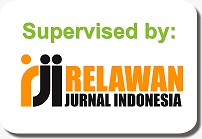Self-Control and Phubbing Behavior in Student Environments
Abstract
Smartphones are a form of technology that is becoming an everyday necessity for all individuals across all age groups, and phubbing stands for phone snubbing, defined as the behavior of ignoring other people during social interactions and instead focusing on the phone. This study aims to see how problematic smartphone use can trigger phubbing behavior caused by a lack of self-control so that it can increase phubbing behavior. This research method uses a type of library research that contains reviews, summaries, and thoughts on phubbing problems in students at school, which aims to reveal various theories relevant to the problems being faced as material for discussion of research findings. The results of this study reveal a relationship between the level of self-control and phubbing behavior, meaning that students with a higher level of self-control tend to exhibit lower phubbing behavior. Further research is likely to examine the relationship between self-control and phubbing behavior in students at school
Downloads
References
Al-Saggaf, Y. (2021). Phubbing, fear of missing out, and boredom. Journal of Technology in Behavioral Science, 6(2), 352-357.
Al-Saggaf, Y., & O'Donnell, S. (2019, December). The role of state boredom, state of fear of missing out, and state loneliness in state phubbing. In The 30th Australasian Conference on Information Systems: ACIS 2019 (pp. 214-221). Australasian Conference on Information Systems.
Al‐Saggaf, Y., & O'Donnell, S. B. (2019). Phubbing: Perceptions, reasons behind, predictors, and impacts. Human Behavior and Emerging Technologies, 1(2), 132-140.
Butler, S. (Ed.). (2017). Macquarie Dictionary (Vol. 5). Macquarie Dictionary Publishers.
Chotpitayasunondh, V., & Douglas, K. M. (2018a). The effects of “phubbing” on social interaction. Journal of Applied Social Psychology, 48(6), 304-316.
Chotpitayasunondh, V., & Douglas, K. M. (2018b). Measuring phone snubbing behavior: Development and validation of the Generic Scale of Phubbing (GSP) and the Generic Scale of Being Phubbed (GSBP). Computers in Human Behavior, 88, 5-17.
David, M. E., & Roberts, J. A. (2017). Phubbed and alone: Phone snubbing, social exclusion, and attachment to social media. Journal of the Association for Consumer Research, 2(2), 155-163.
Ergün, N., Göksu, İ., & Sakız, H. (2020). Effects of phubbing: Relationships with sociodemographic variables. Psychological reports, 123(5), 1578-1613.
Ivanova, A., Gorbaniuk, O., Błachnio, A., Przepiórka, A., Mraka, N., Polishchuk, V., & Gorbaniuk, J. (2020). Mobile phone addiction, phubbing, and depression among men and women: A moderated mediation analysis. Psychiatric Quarterly, 91, 655-668.
Juliawati, D., Yandri, H., & Afrifadela, N. (2020). Self Control Belajar Siswa di Sekolah dalam Menghadapi Era Revolusi Industri 4.0. Tarbawi: Jurnal Ilmu Pendidikan, 16(1), 71-80.
Kaonang, G. (2016). Memahami Tren Penggunaan Smartphone di Indonesia Berdasarkan Usia. https://dailysocial.id/post/memahami-tren-penggunaan-smartphone-di-indonesia-berdasarkan-usia
Karadağ, E., Tosuntaş, Ş. B., Erzen, E., Duru, P., Bostan, N., Şahin, B. M., ... & Babadağ, B. (2015). Determinants of phubbing, which is the sum of many virtual addictions: A structural equation model. Journal of behavioral addictions, 4(2), 60-74.
Kominfo. (2014). Pengguna Internet Indonesia Nomor Enam Dunia. https://kominfo.go.id/content/detail/4286/pengguna-internet-indonesia-nomor-enam-dunia/0/sorotan_media
Kominfo. (2017). Survey Pengguna TIK, serta Implikasinya pada Aspek Sosial Budaya Masyarakat. https://balitbangsdm.kominfo.go.id/?mod=publikasi&a=dl&page_id=360&cid=9&download_id=187
Kurnia, S. (2020). Hubungan antara kontrol diri dengan perilaku phubbing pada remaja di Jakarta. Jurnal Psikologi: Media Ilmiah Psikologi, 18(01).
Kwon, M., Kim, D. J., Cho, H., & Yang, S. (2013). The smartphone addiction scale: development and validation of a short version for adolescents. PloS one, 8(12), e83558.
Lin, C. Y., Griffiths, M. D., & Pakpour, A. H. (2018). Psychometric evaluation of Persian Nomophobia Questionnaire: Differential item functioning and measurement invariance across gender. Journal of behavioral addictions, 7(1), 100-108.
Marsyaf, M. I. (2021). Jumlah Pengguna Internet Sedunia Mencapai 4,66 Miliar. https://tekno.sindonews.com/read/316920/207/jumlah-pengguna-internet-sedunia-mencapai-466-miliar-1611820860
Mumtaz, E. F. (2019). Pengaruh adiksi smartphone, empati, kontrol diri, dan norma terhadap perilaku phubbing pada mahasiswa di Jabodetabek (Bachelor's thesis, Fakultas Psikologi UIN Syarif Hidayatullah Jakarta).
Nazir, T., & Bulut, S. (2019). Phubbing and what could be its determinants: A dugout of literature. Psychology. 10 (06), 11.
Nopiarni, R., Yandri, H., & Juliawati, D. (2020). Perilaku Membolos Siswa Sekolah Menengah Atas di Era Rovolusi Indutri 4.0. Jurnal Bikotetik (Bimbingan dan Konseling: Teori dan Praktik), 4(1), 21-24.
O'Donnell, E., & O'Donnell, L. (2022). The dark side of engaging with social networking sites (SNS). In Research Anthology on Usage, Identity, and Impact of Social Media on Society and Culture (pp. 1-14). IGI Global.
Syarif, N. (2015). Pengaruh perilaku pengguna smartphone terhadap komunikasi interpersonal siswa SMK TI Airlangga Samarinda. E-Journal Ilmu Komunikasi, 3(2), 213-227.
Copyright (c) 2023 Wenny Audina Kartikasari, Firman, Afdal

This work is licensed under a Creative Commons Attribution 4.0 International License.








